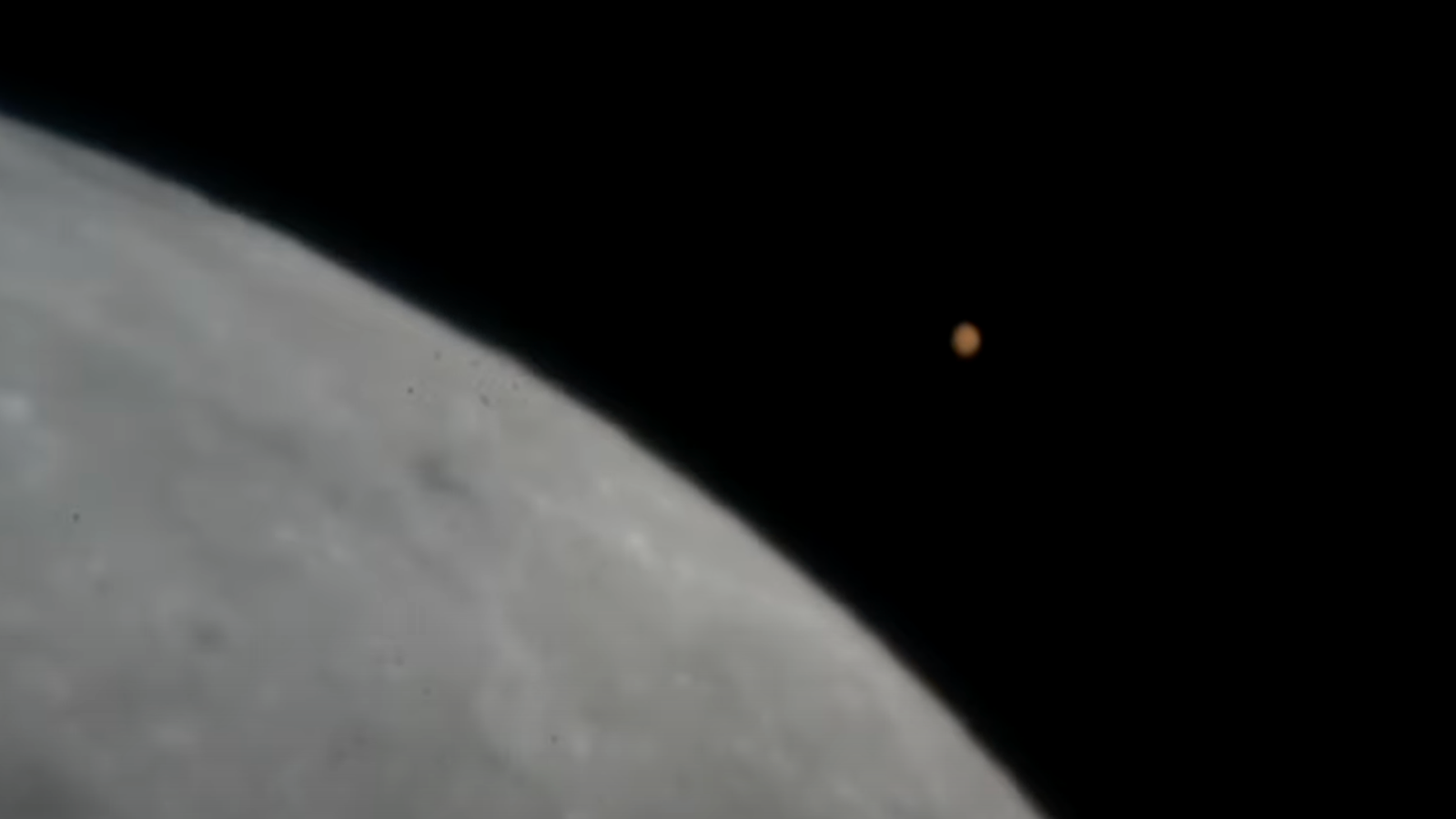Skywatchers have been treated to the spectacular sight of Mars disappearing behind the moon.
The event, which astronomers call an occultation, happened last night and was visible from parts of the US, northwestern South America, the Caribbean, and Mexico.
Similar to a lunar eclipse, when the Earth is positioned perfectly between the moon and the sun, the occultation saw the moon appear to pass in front of the red planet.
Read more:
Earth ‘near miss’ with asteroid the size of a mini bus explained – all you need to know
Earth’s inner core may have stopped spinning as part of seven-decade cycle, say scientists
It disappeared for around an hour, and then emerged from the opposite side.
The moment was captured by the Griffith Observatory in Los Angeles, which livestreamed the event online.
Both the moon and Mars appeared particularly bright in the night sky during the occultation.
The moon was nearly 75% illuminated, while Mars was at over 90% – helping make it visible to the naked eye.
Please use Chrome browser for a more accessible video player
Are there any more occultations coming up?
Such lunar occultations of planets are relatively rare when compared to those involving stars.
According to the website In The Sky, which provides forecasts for these events, the moon will pass in front of Jupiter during the evening of 22 February.
It is projected to be visible from Argentina, Chile, and the Falklands.
The next lunar occultation of Mars is due on 28 February, but visibility will be limited to Greenland, the freezing Norwegian archipelago of Svalbard, and parts of western Russia.
Click to subscribe to the Sky News Daily wherever you get your podcasts
But Britons could have an opportunity to spot Jupiter on 17 May, when an occultation is tipped to be visible from northern parts of Scotland and Northern Ireland.
Unfortunately, it is right in the middle of the day, making viewing conditions much more difficult.









